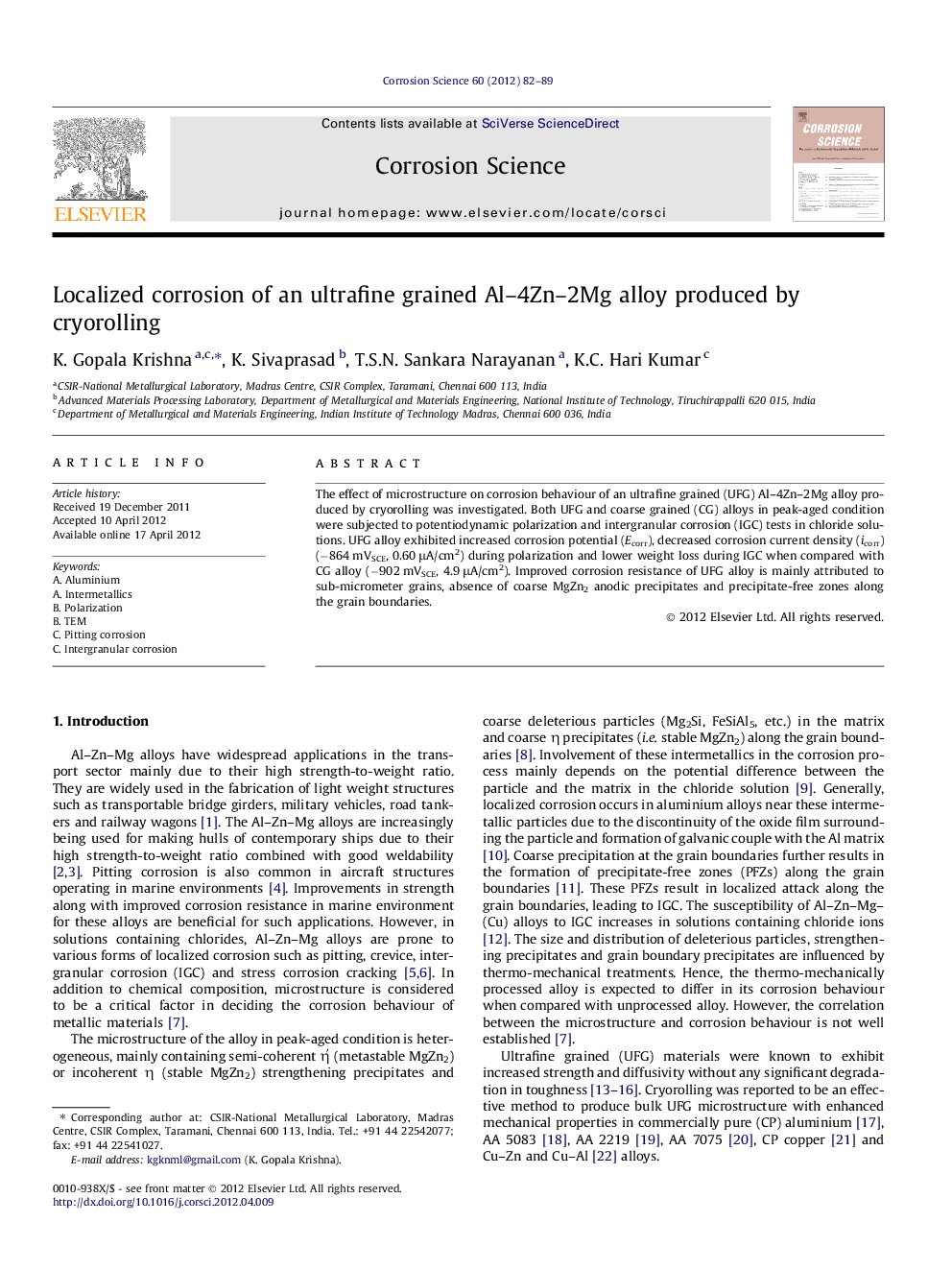| Article ID | Journal | Published Year | Pages | File Type |
|---|---|---|---|---|
| 1469535 | Corrosion Science | 2012 | 8 Pages |
The effect of microstructure on corrosion behaviour of an ultrafine grained (UFG) Al–4Zn–2Mg alloy produced by cryorolling was investigated. Both UFG and coarse grained (CG) alloys in peak-aged condition were subjected to potentiodynamic polarization and intergranular corrosion (IGC) tests in chloride solutions. UFG alloy exhibited increased corrosion potential (Ecorr), decreased corrosion current density (icorr) (−864 mVSCE, 0.60 μA/cm2) during polarization and lower weight loss during IGC when compared with CG alloy (−902 mVSCE, 4.9 μA/cm2). Improved corrosion resistance of UFG alloy is mainly attributed to sub-micrometer grains, absence of coarse MgZn2 anodic precipitates and precipitate-free zones along the grain boundaries.
► Cryorolling of Al–4Zn–2Mg alloy produced UFG structure with modified precipitation. ► Corrosion behaviour is determined using both electrochemical and immersion tests. ► UFG alloy exhibited improved corrosion resistance than the coarse grained alloy. ► Corrosion behaviour is correlated with microstructure of UFG Al–Zn–Mg alloy. ► Improvement is due to absence of coarse precipitates and precipitate-free zones.
